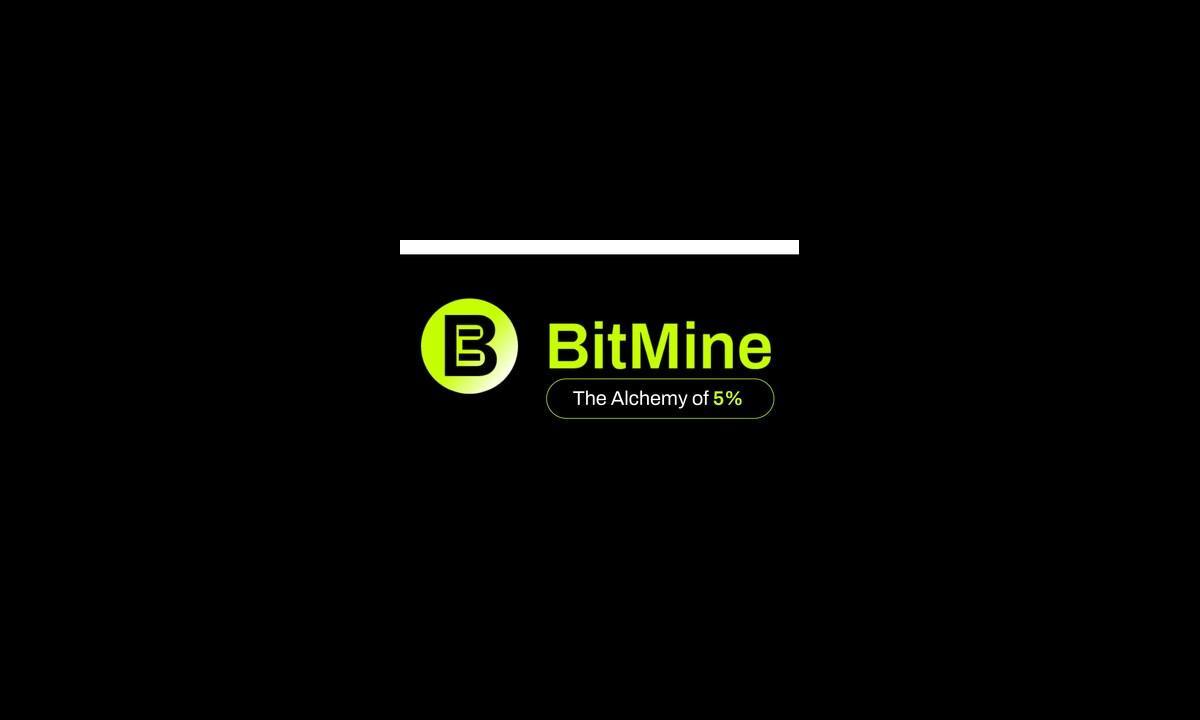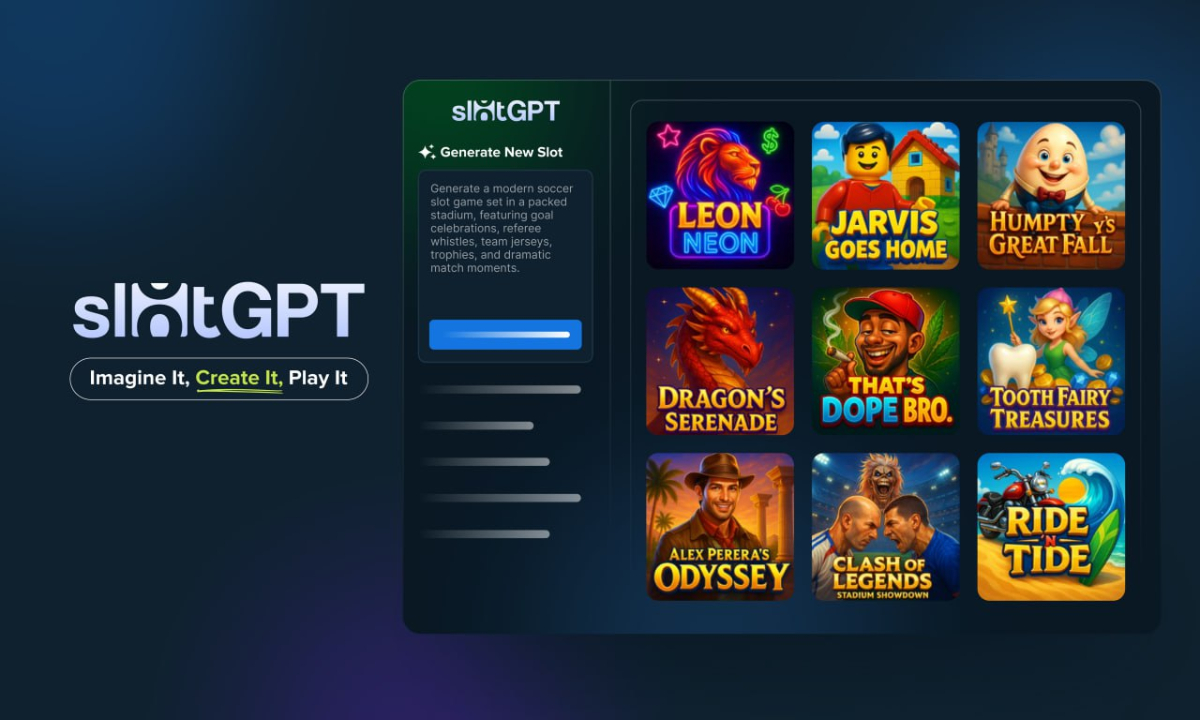Trezor And Ledger Review: A Look At The 2 Best Crypto Hardware Wallets Today
When it comes to maintaining and safeguarding your crypto holdings, hardware wallets and software wallets are two of the most common solutions. Regarding hardware wallets, Trezor and Ledger are two indispensable names.
Hardware wallets, such as the Ledger Nano X and the Trezor Model T, provide additional protection due to their offline storage capabilities, although software wallets are more handy and accessible due to their mobile access. These wallets include a variety of features and security settings to help you secure your cryptocurrency investments.
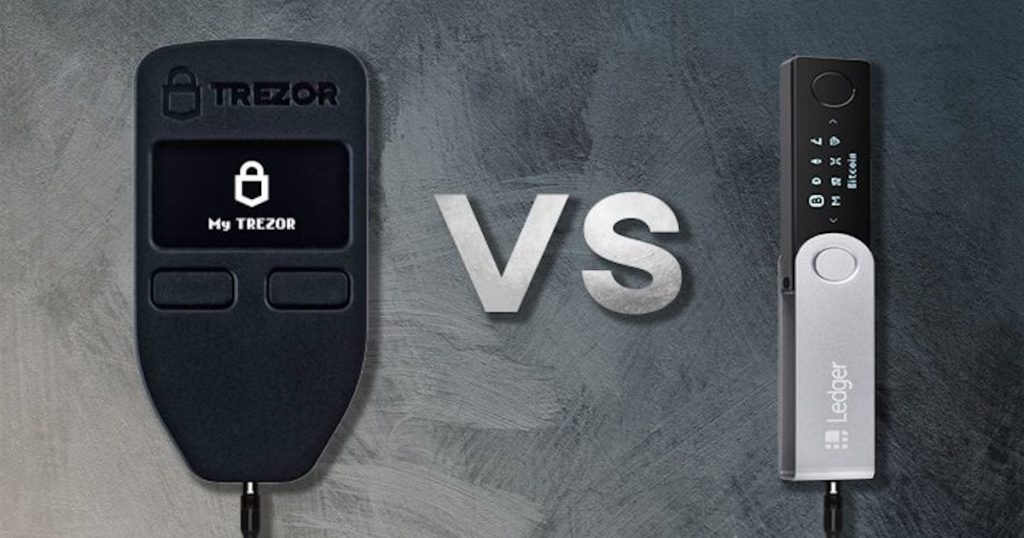
In this Trezor And Ledger Review article, we’ll look at the differences between these two wallet kinds and compare them to help you determine which one is best for you. Whether you’re an experienced crypto trader or just getting started, this guide will provide you with all the knowledge you need to make an educated choice on how to keep and manage your cryptocurrency holdings.
What is a hardware wallet?
A crypto hardware wallet is a physical device that keeps the private keys required to access your crypto while you are not connected to the internet.
These gadgets, which resemble USB sticks or key fobs, may be seen as portable pocket vaults that digitally store the critical information required to access your crypto money.
You’ve probably heard the expression “not your keys, not your crypto” before. This relates to who owns your private keys, which may be compared to your bank account’s PIN number.
When you hold cryptocurrencies on a crypto or third-party platform run by a firm, the underlying company has the private keys to the wallet where those monies are housed, not you.
This implies that the custodial platform has entire authority over your cryptocurrency, and you must have complete faith in the underlying corporation to adequately safeguard your money and demonstrate that it has enough assets in reserve to satisfy any withdrawals you make at any time.
Even with the strongest protection, however, storing assets on custodial systems is never recommended. Hardware wallets should always be utilized since they provide the highest security and theft prevention.
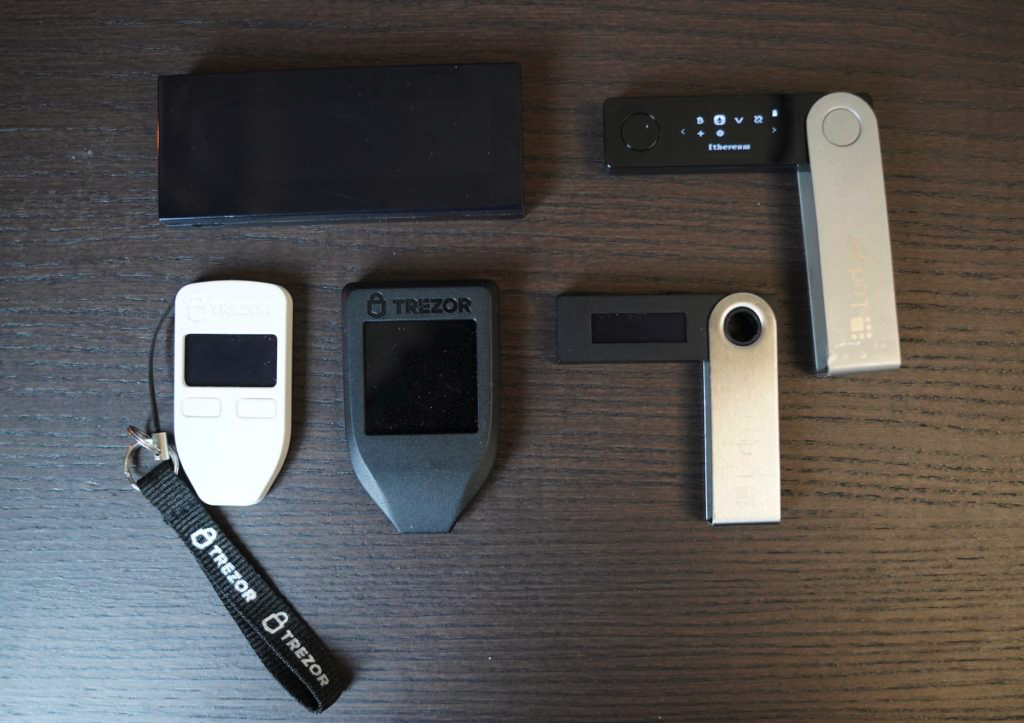
Ledger vs. Trezor
Trezor and Ledger are two well-known cryptocurrency companies. Both provide safe hardware wallets, support over 1,000 currencies and have cryptocurrency exchanges built in. Trezor is a SatoshiLabs product that was introduced in 2013 and had its headquarters in Prague, Czech Republic. Ledger was established in 2014 and is based in Paris, France.
Trezor and Ledger are two of the best hardware wallets for safe, offline cold storage of digital assets. Comparing the two, Ledger outperforms Trezor in terms of usefulness, features, and tools.
Ledger provides access to decentralized applications (Dapps) and exchanges, as well as instructional material, market research, and a Bluetooth-enabled mobile app. You may stake coins and access NFT markets using a Ledger device and associated mobile or desktop applications, eliminating the need for third-party software, like you would with Trezor.
But Trezor’s most costly device, the Model T, which costs more than three times as much as the ordinary model, offers appealing security features that may make it a preferable option for some. It has a recovery share distribution tool called Shamir Backup, which allows you to produce and distribute up to 16 recovery shares for your device and store them in separate locations. The Trezor And Ledger Review article will continue with explorations of each wallet type. Let’s also find out 2 featured products of these two crypto hardware wallet providers:
Ledger Nano X
The Secure Element, a sort of chip often used in passports and payment systems, is the Ledger Nano X’s distinguishing characteristic. According to Ledger, it incorporates critical safeguards against assaults and makes it tamper-proof and hack-resistant.
- A Bluetooth connection is included on the Ledger Nano X, letting you to manage your cryptocurrency on the road using the Ledger Live smartphone app.
- Storage Capacity Increased: The Ledger Nano X has a storage capacity of up to 100 applications, which is ten times that of its predecessor, the Ledger Nano S.
- Increased Security: The Ledger Nano X now has a new Secure Element, a CPU that has been certified to Common Criteria EAL5+, the greatest degree of security for a microcontroller.
- Bigger Screen: The Ledger Nano X has a larger, 128×64 pixel OLED display that makes navigating and confirming transactions simpler.
- USB Type-C: The Ledger Nano X supports USB Type-C for quicker data transmission and charging.
- Support for a Wide Range of Cryptocurrencies: The Ledger Nano X supports a wide variety of cryptocurrencies, including Bitcoin, Ethereum, Litecoin, and many more.
- Connection with Ledger Live: The Ledger Nano X may be connected with the Ledger Live program, making it possible to manage and monitor your crypto holdings easily.
- Two-Factor Authentication: The Ledger Nano X adds an additional degree of security by allowing you to set up two-factor authentication, which protects your crypto assets.
Ledger just released Ledger Stax. It is a simple application that allows you to manage your crypto and NFTs with ease. You may effortlessly and properly sign your transactions with clarity and comfort thanks to its cutting-edge curved E Ink touchscreen. You may make your smartphone uniquely yours by personalizing the lock screen with your favorite NFT or picture.
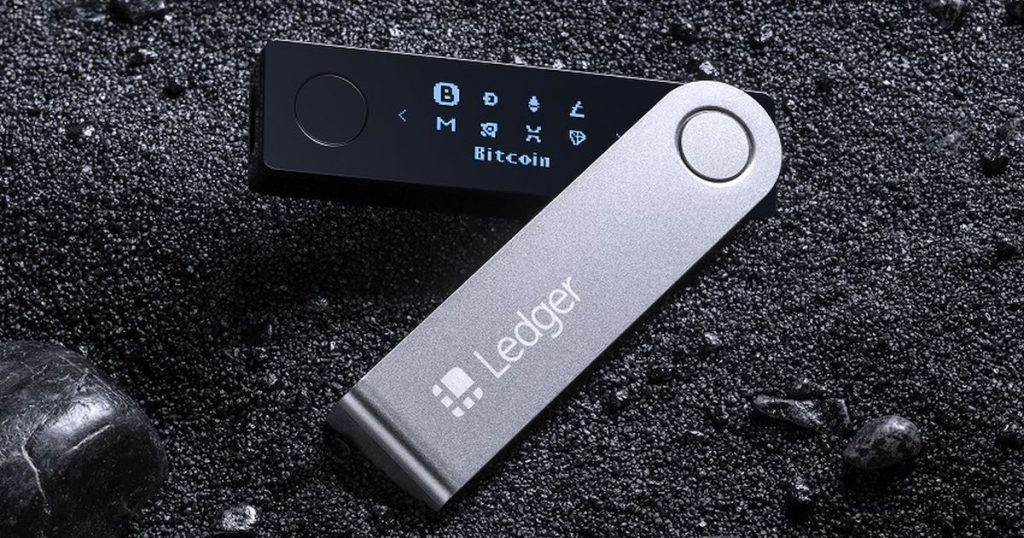
Trezor Model T
With its unique security feature, the Trezor Model T goes old school, yet it works flawlessly. The gadget contains a microSD card slot, allowing the user to add more secure storage in the future. Nowadays, the card may be used to encrypt the PIN and further protect the physical device from significant threats.
- Touchscreen Display: The Trezor Model T has a full-color touchscreen display that makes navigating and confirming transactions simple.
- Additional security features include passcode protection, seed recovery, and a password manager on the Trezor Model T.
- Support for a Wide Range of Cryptocurrencies: The Trezor Model T supports a wide variety of cryptocurrencies, including Bitcoin, Ethereum, Litecoin, and many more.
- USB Type-C: The Trezor Model T supports USB Type-C for quicker data transmission and charging.
- Easy Recovery: The Trezor Model T has a simple recovery function that lets you restore your private keys and seed phrase by utilizing the device’s built-in recovery seed.
- Integration with Trezor Wallet: The Trezor Model T may be linked with the Trezor Wallet, making it possible to manage and monitor your crypto holdings easily.
- Advanced Password Entry: The Trezor Model T allows advanced password entry, adding an additional degree of security to your cryptocurrency holdings.
- Firmware updates: The Trezor Model T has the ability to upgrade the firmware over the air, ensuring that you get the most up-to-date security features and bug fixes.
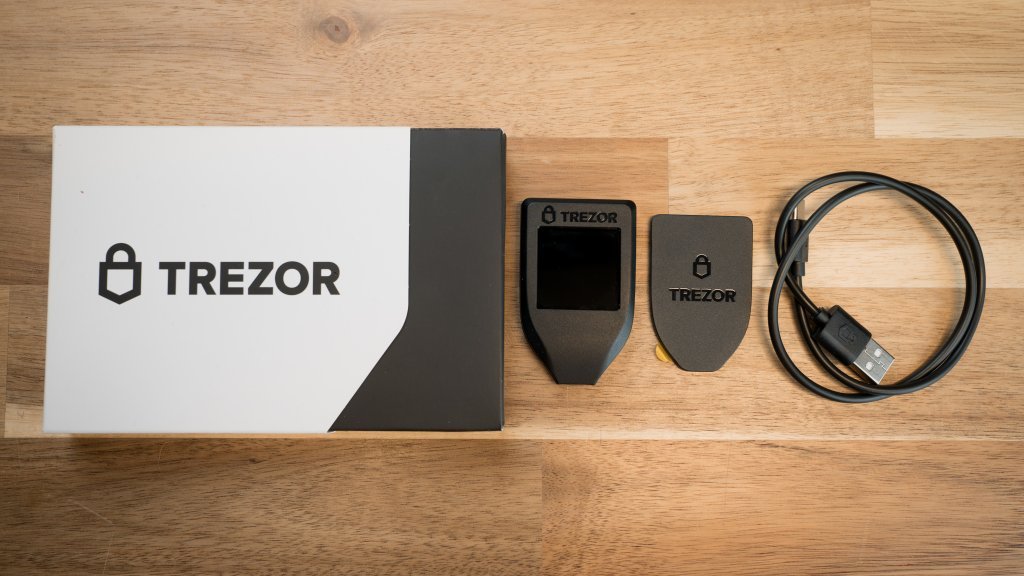
The table below shows us the specific metrics of these two wallets:
| Ledger Nano X | Trezor Model T | |
|---|---|---|
| Price | $149 | $219 |
| Security | EAL 5+ certified Secure Element PIN protection 24-word recovery phrase | CE and RoHS certified PIN protection Shamir Backup |
| Connectivity | USB-C Bluetooth | USB-C SD Card |
| Supported cryptocurrencies | 5,500+ coins and tokens | 1456 coins and tokens |
| Software suite | desktop, Android and iOS | desktop, browser, Android and iOS (only txn tracking) |
| Display | 128×64 px, OLED | 1.54” Touchscreen Color LCD (240×240 px) |
| Dimensions | 72×18.6×11.7mm (2.83×0.73×0.46 in) | 64x39x10 mm (2.52×1.54×0.39 in) |
| Weight | 34g (1.19 oz) | 22 g (0.77 oz) |
| Box contents | Ledger Nano X USB-A to USB-C cable getting started leaflet 3x recovery sheets keychain strap | Model T Magnetic dock 2x Recovery seed card USB-A to USB-C cable Trezor stickers |
Now, the Trezor And Ledger Review article will clarify the features for you.
Features
Trezor and Ledger are two of the finest crypto wallets that provide comparable functionality. Although both manufacturers need a USB wire to connect, the elegant Ledger devices seem to be conventional steel USB storage devices (except for the Ledger Stax which almost looks like a mini smartphone with its touchscreen covering the entire front). However, Trezor devices are a little lighter, have a plastic shell, and are curved differently. All five devices are compatible with Linux, Windows, and Mac computers. Trezor users, on the other hand, can only connect to Android devices through the mobile web, while Ledger offers an iOS and Android app.
The Trezor Model One features a display resolution of 128×64 pixels. Both the Ledger Nano S Plus and Nano X feature a 128×64-pixel display. The distinction is in the firms’ premium versions, with the Trezor Model T featuring a 240×240 pixel liquid crystal display (LCD) color touchscreen. The Ledger Stax, on the other hand, has a bigger touchscreen with 400×672 pixels, however, it is greyscale rather than color.
In terms of connection, mobile users prefer the optional Bluetooth functionality of the Ledger Nano X and Stax versions, which Trezor does not provide.
The Ledger Live software includes NFT administration and decentralized finance access, while Trezor devices need a connection with third-party software to connect to Dapps and non-fungible token exchanges. Moreover, users may only stake coins using the more expensive Trezor Model T, although both Ledger devices offer to stake.
Trezor devices must be coupled with third-party software like Metamask and Exodus in order to connect to Dapps and handle currencies such as Ripple (XRP), Monero (XMR), and Cardano (ADA) (ADA). Ledger devices may also connect to alternate blockchains using third-party software like as MyEtherWallet and Metamask, however, integration isn’t required to handle most cryptos.
Security
Trezor and Ledger are security industry leaders because they both give private keys that never leave the devices. Trezor versions have a single chip basis, while Ledger devices have a dual chip base. The second chip in the Ledger is a bank-grade secure element (SE), which provides extra protection against hardware-based assaults.
Ledger employs a one-of-a-kind blockchain open ledger operating system (BOLOS), which is an open-source platform. However, unlike Trezor, Ledger wallets employ closed-source firmware, which means it cannot be reviewed or tested for vulnerabilities by external parties. The Trezor One wallet also demands users to input the password through a keyboard, while Ledger users enter it on the hardware.
BIP39 (Bitcoin Improvement Proposals) passes are supported by all five devices. Nevertheless, only the Trezor Model T has Shamir Backup for enhanced private key security. It’s worth noting that Ledger lost some public trust after a hack of a marketing database in 2020, which revealed people’s contact information.
Similarly, Kraken’s security group was able to hack Trezor hardware wallets after obtaining actual devices as part of vulnerability testing.
Functionality
The Ledger Live platform is now accessible on desktop and mobile devices, with a browser extension in experimental testing. The Ledger Nano X model can easily connect to the mobile app through Bluetooth, giving consumers easy access to exchanges and Dapps.
Trezor has a desktop client, a browser extension, and an Android app on the way, however, it is not compatible with Apple’s mobile operating system. Also, Trezor lacks Bluetooth connectivity, which its inventor’s claim is a security benefit.
Trezor needs third-party integration to stake coins and access NFT markets, while Ledger Live apps have these functions built into their platform.
Ease of Use
The devices from Ledger and Trezor are built with tight account verification and passcode setting, making the setup procedure relatively easy. Those used to touch screens and bigger displays, on the other hand, may find it difficult to manage the lower-end devices, which have tiny screens and just two tactile buttons. Despite this, the general setup and use of both devices are similar.
The Trezor Model T earns somewhat better evaluations for ease of use than the Ledger Nano X, owing to its color touchscreen display. While being somewhat bigger than the Nano S and having more room between the physical buttons, the Nano X’s screen is less user-friendly than the Trezor. Still, connecting the Ledger Nano S Plus to a phone through Bluetooth is simpler than attaching the Trezor versions, which need a USB connection.
Pricing
Trezor has two devices, whereas Ledger has three. The Trezor One and Ledger Nano S Plus are around the same price, $69 for the Trezor and $79 for the Nano S Plus. Each of these gadgets contain two physical buttons as well as mini OLED screens. The key difference is that the Trezor One can hold less coins than the Nano S. Ripple (XRP), Monero (XMR), and Cardano (ADA) investors will favor the Ledger Nano S. The Ledger Nano X, which costs $149, is a step above from these gadgets. The biggest difference between it and the Nano S Plus is Bluetooth connection.
Trezor and Ledger’s premium devices both have a touchscreen. The Ledger Stax, on the other hand, has a much bigger screen that is just greyscale and not color, but the Trezor Model T has a color screen that is smaller than the Ledger touchscreen. Trezor’s Model T is less expensive at $219, compared to the Ledger Stax’s $279 price tag.
Bitcoin investors seeking for a low-cost hardware wallet for cold storage would like the Trezor One or Ledger Nano S. If you want Bluetooth, go with the Ledger Nano X, while those who want a touchscreen should go with the Trezor Model T or Ledger Stax.
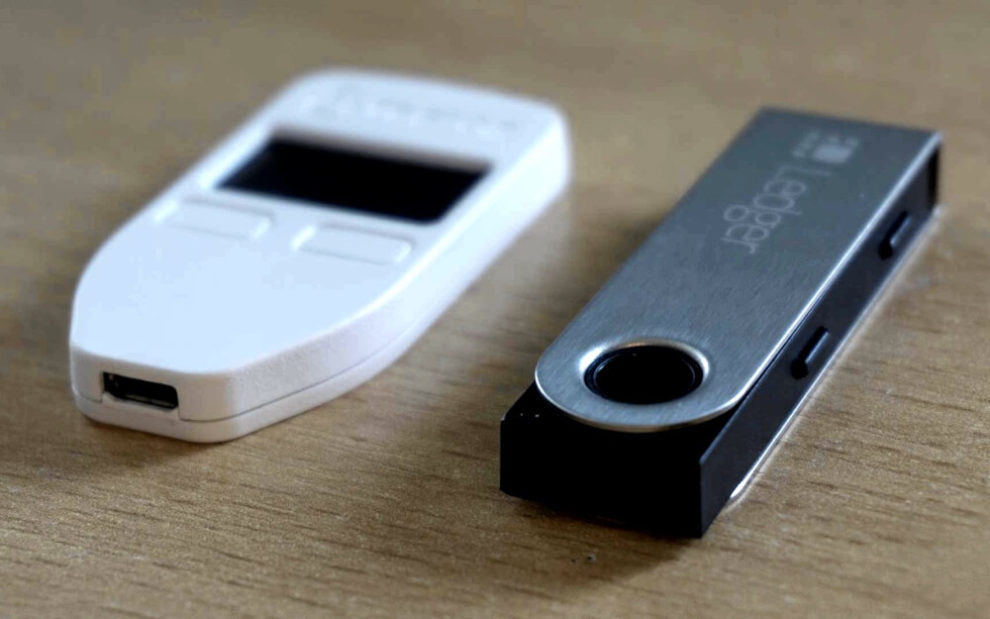
Tools
Ledger Academy, a vast collection of crypto instructional materials, is available to users. This site includes gadget tutorials, popular crypto news, and in-depth explainers on a wide variety of crypto issues, from blockchain basics to frequent frauds.
Trezor’s support center, on the other hand, is less remarkable, however, it does include useful instructions on how to utilize Trezor devices and software.
Moreover, Ledger Live offers market research tools that enable users to monitor the value of their currencies. Trezor devices, on the other hand, need third-party software integration to get market analysis features.
Supported cryptocurrencies
Trezor and Ledger support hundreds of different cryptocurrencies. There is a caveat, though. The Ledger Nano X does officially support over 5,500 coins and tokens. However, that’s the entire roster of supported cryptocurrencies when accounting for officially supported third-party wallets. Natively, Ledger Live supports roughly 500 coins and tokens.
According to Trezor, the Model T supports 1456 coins and tokens via the Trezor Suite, including all the major coins like Bitcoin, Ethereum, Cardano, XRP, and hundreds of others.
Whether you go for the Nano X or Model T, you shouldn’t have any problems managing any of your cryptocurrencies as both devices offer an impressive range of supported crypto assets, especially when paired with third-party wallets.
Mobile App
The Ledger Live program is a must-have for Ledger wallet users. It is available for both desktop and mobile use. The Ledger Live program performs the following tasks:
- Initial wallet configuration
- Manage your cryptocurrency accounts.
- Examine your cryptocurrency balance
- Make cryptocurrency transactions (send and receive)
- Trezor does not currently have a mobile app, but one is planned for later in 2021. Users may now utilize their Chrome extension or Trezor Bridge which is compatible with their operating system. Trezor Suite, a desktop program, also gives information on portfolio management and compatible exchanges.
Trezor provides 15 third-party wallet apps, while Ledger provides 24.
Conclusion of Trezor And Ledger Review
Ledger Academy is a comprehensive collection of crypto instructional information for its customers that includes device tutorials, current crypto content, and extensive explainers on different crypto-related subjects ranging from blockchain principles to typical frauds.
In terms of the two major products, choosing between the Ledger Nano X and the Trezor Model T is a matter of personal taste, since both devices provide an excellent feature set that should please even the most demanding customers.
Trezor and Ledger’s secure hardware wallets are user-friendly and safe for storing crypto. Both provide access to cryptocurrency exchanges and support over a thousand currencies and tokens. Bluetooth is available on the Ledger Nano X and Stax, and Ledger wallets support Ripple, Monero, and Tezos. The Trezor Model T has a color touchscreen, but the Ledger Stax has a bigger, greyscale-only touchscreen.
While it’s a close call, Ledger outperforms Trezor owing to its three device choices, the bigger touchscreen on the premium model, mobile app, iOS connection, and compatibility with a few more popular currencies and wallets. A Trezor Model T, on the other hand, has Shamir Backup and a touchscreen at a lesser cost.
Trezor’s help center, on the other hand, is less outstanding, despite the fact that it does give relevant instructions on how to utilize Trezor devices and software.
Additionally, Ledger Live provides market analysis tools to watch the value of your coins, but Trezor devices need third-party software integration, which is an extra step. Hopefully the Trezor And Ledger Review article has helped you understand the strengths of each type of wallet.
DISCLAIMER: The information on this website is provided as general market commentary and does not constitute investment advice. We encourage you to do your own research before investing.
Join us to keep track of news: https://linktr.ee/coincu
Harold
Coincu News




















